The study of eastern Uralic branches is clearly underdeveloped relative to western ones, and in desperate need of a proper reassessment. This linguistic obscurity contrasts heavily with the decades-long tradition of categorically pinning ethnolinguistic labels (“Ugric” or “Hungarian”) to different prehistorical cultures by (post-)Soviet archaeology, and with the identification of Hungarian as Turkic continuing Turanist trends; 20th century papers showing one of both trends rarely if ever withstand basic scientific scrutiny.
The following is a combination of rewritten excerpts about Ugric in general and Hungarian in particular, as well as some other texts on the linguistic predecessor of the Old Hungarian attested in the Carpathian Basin, coupled with some more or less recent archaeological and genomic data, as per the request of a long-time commenter of this blog*. Of course, there is nothing in this post (or in any other text) that can be definitive until the relevant linguistic issues are settled, and a proper assessment of archaeological and genomic data is reported.
* László Pálfalvi has helped add interesting archaeological and linguistic details to the following text.
- Uyelgi & Cis-Uralian Groups.
- 1. Linguistics.
- 2. Archaeology & Genetics.
- Gorokhovo–Sargat Culture.
- Middle Volga Early Stage (“Heraldic Type Belt Sets”).
- Middle Volga Late Stage (Khazar Period).
- 3. Wrap-Up.
- References.
Uyelgi and Cis-Uralian Groups
The FamilyTreeDNA Haplotree team formed by phylogeneticist Michael Sager and Göran Runfeldt from the R&D team has been so kind as to share the Y-chromosome haplogroup of samples reported by Csáky et al. (2020). As they expected, due to their low coverage, there are no apparent great surprises. However, a single sample with the necessary trail of SNPs seems to upend the partial SNP- and (essentially) STR-based estimations made by Csáky et al. (2020), where the authors assume that seven likely N-Y13850 samples “most probably belong to N-Y24365”.
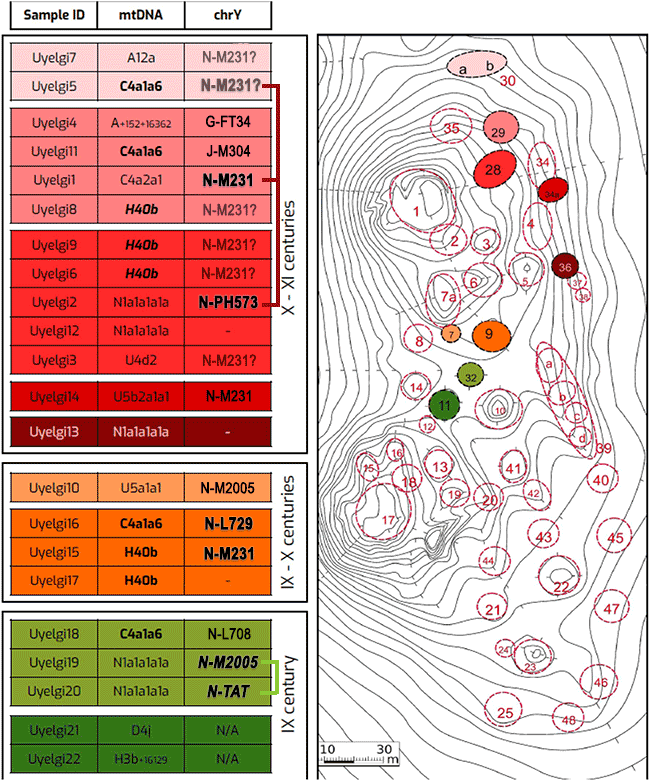
Uyelgi2 belongs to N-PH573, subclade of N-L1034 (sister clade of Y24365 within Y13850), and it shows an “identical Y-STR profile” with Uyelgi1 and Uyelgi5. The latter are used for all other STR comparisons, which should thus be corrected as probably within hg. N-L1034; that is, if STRs can be trusted for that at all.
NOTE. In fact, it also questions the prediction of the supposedly paternally related Hungarian Conquerors BB3 and KEII/29 (and possibly also, one step apart, KEII/14), a connection reported in Fóthi et al. (2020) as Z1936(xL1034) based on the SNP examination of KEII/29 in Neparáczki et al. (2019). Since BB3 and KEII/29 are reported to be “one step away” from Uyelgi1-Uyelgi5, it is unclear which specific haplogroup BB3 belongs to (and indeed impossible to know about KEII/14), and all of these problematic assignments question the utility of STR comparisons in modern scientific papers… I have assumed as the best estimation in the Ancient DNA Dataset that samples from each territory most likely belong to their closest geographical relatives with firm SNP estimations.

The FTDNA team also reports further subclades for Uyelgi4 (G-FT34, one step below the reported G-L1266), and they were also able to find enough support to determine hg. N for Sukhoy4, an early sample from Sukhoy Log, a Cis-Uralian cemetery connected to the Late Nevolino culture.
1. Linguistics
The linguistic account below follows mainly Saarikivi’s (2020) summary of Ugric dialects.
1.1. Ugric Proto-Language?
Hungarian is described as a core rather than peripheral dialect of Proto-Uralic. It shares phonematic (development of sibilants) and morphological developments (common postpositions / case suffixes) with Ob-Ugric dialects—Mansi and Khanty. The three are traditionally described as part of an Ugric branch.
Nevertheless, their small shared vocabulary and the lack of regular sound correspondences do not seem to warrant a reconstruction of a Proto-Ugric language (cf. Viitso 1996).
In fact, among the 208 shared ‘regular’ Ob-Ugric stems (Sipós 2002) there are probably many shared borrowings from West Siberian substratal (extinct) languages, similar to how Saami and Samoyed also show a strong stratum of lexicon from unidentified sources.
This suggests that, unlike other well-established Uralic branches, Ugric dialects represent an early Sprachbund formed by multiple intermediate related proto-languages with long-lasting intense contacts, probably dating back to a period earlier than ca. 2000 BC, which contradicts the traditional (culturally based??) assessment that the branch split up ca. 1000 BC.
Within the Ugric branch, Mansi (as opposed to Khanty) shows a particularly close relationship to Hungarian:
- The numeral ‘3’ in Mansi and Hungarian has an irregular -r-; cf. Hu. három, Ms. ko:røm, ku:røm; cf. Kh. ko̞løm, E xutøm, P xoløm.
- The ethnonym of the Mansi is related to the ethnonym magyar; the latter represents a compound *mańći-ar-, with the final component presumably being a Turkic borrowing meaning ‘man, person’.
NOTE. Whereas semantically the nature of Hu.-Ms. cognates as ethnonym is quite telling, there are phonological and etymological problems. (1) The differing protoforms Pre-PHu. *mańći ~ Pre-PMs. *māńć- (**mäńći?) ~ PKh. *mǟnć- ‘name of a phratry’, which can be interpreted as a borrowing from P(I)Ir. *manuš into Pre-PHu., Pre-PMs., and Pre-PKh. likely within a tight Ugric Sprachbund ~ P(I)Ir. community, even though a substitution as **manV or a three-syllable word would have been expected. A substitution **mVńć- ← P(I)Ir. **manš- is the common ad hoc explanation for the replacement by *ńć-. (2) The second component has been traditionally interpreted as Pre-PHu. *mańći-erkV, from a PU *irkä/*ürkä ‘man’, supposedly cognate with Mari erγe, erγə ‘boy’, but all this set is problematic from a phonological and chronological point of view, and a recent Turkic reflex in both (P)Hu. and (P)Ma. is a simpler, hence preferable explanation. (3) The recent connection of Hu. magyar and the word mese ‘tale’ and its Khanty cognates (Khanty V mańt’, DN mońt’, O maś ‘Sage’) is explained as originally distinct words that have become etymologically connected. For a full discussion of this etymon, see Holopainen (2019: 133-135 with references).
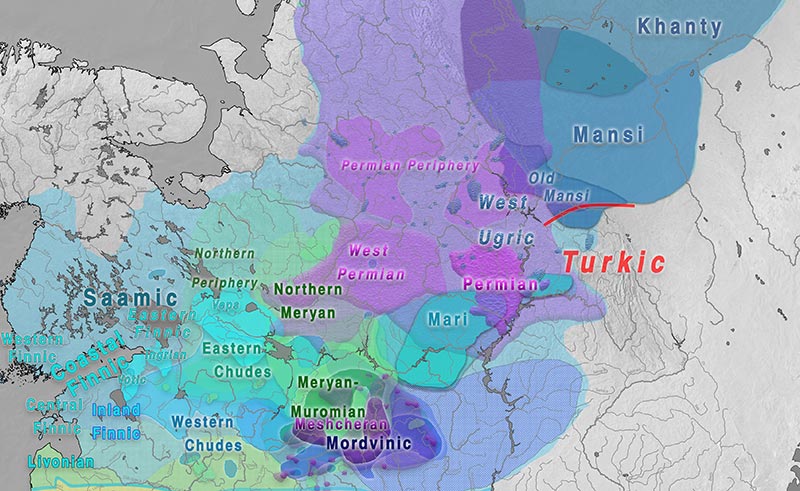
1.2. Hungarian–Permic Sprachbund
Sound changes such as *mp → b, shared with Permic, and the (partial) marking of object person in the finite verb, shared with Mordvin, point to Sprachbund convergences (Abondolo 1998: 428), which suggest early and intense contacts between these proto-languages.
NOTE. On the other hand, the spirantization of initial *p- (like northernmost and southernmost Samoyedic dialects) and of initial *k- before back vowels (like Northern and Eastern Mansi, and Western Khanty) are most likely independent developments, based on their scattered, late dialectal distribution.
Furthermore, there must have been early, long-lasting contacts between the predecessors of Permic and Hungarian to explain their shared lexical features, such as (Csúcs 2007, Metsäranta 2012):
- Komi чукöр t͡ɕukoer ~ Hu. csokor ‘bunch’.
- Komi векны veknɨ ~ Hu. vékony ‘thin’.
- Komi кеныр keɲɨr ‘pearl barley, groat’ ~ Hu. kenyér ‘bread’.
- Komi байдöг bajdøg ~ Hu. fajd ‘capercaillie’.
These probably represent borrowings in either direction (Napolskih 2008; Metsäranta 2012), and contrast thus with Komi borrowings in Mansi and Khanty, which show recent dialectal features and no Proto-Permic or older traits. Given the guesstimates for their respective proto-languages, PHu. ~ PP contacts must have happened no later than the Late Iron Age, although the relative chronology of these loanword layers also needs further investigation.
NOTE. Not exactly straightforward are the reasons of Aikio (2014) to support that “several dozen loans” show a very specific PP *ĭ̮ (as opposed to Komi i̮) → PKh. *i, which would put both proto-languages in contact during the (Early?) Iron Age, hence quite to the west, in the Central (Cis-?)Urals region. Napolskih’s (2005) discussion of a potential connection POUg. *jārɣVn (~ *jāɣrVn) ‘Nenents; peoples to the north of Ob-Ugrians’ ← PP jȯgra ‘Ob-Ugrians; peoples to the (north-)east of Komi’ is relevant from the point of view of the ethnonym behind O.Russ. Jugra – probably different from CSlav. *ǫgŭr. However, the details are slippery, with multiple proposed borrowings, protoforms, and intervening third unattested ad hoc sources.
Vocabulary shared with Mordvinic also seem to support early contacts in the Volga region; cf. Hu. könyű, könyő ‘book’, Erzya konjov ‘book’.
NOTE. A possible cognate – likely to be ultimately from Germanic – is PSlav. *kъňìga, borrowed from East Slavic into Chuvash kĕneke and Ossetian ḱinyg, kiwnugæ.
These western contacts might also be indirectly reflected in Mansi borrowings in Hungarian (cf. Hu. tolvaj ‘thief’ ~ Ms. tūlmaχ ← PU *sala- ‘steal’), although these would not discard by themselves a location on the steppes south of the Mansi area.
Also important are the stems with a “Finno-Permic” distribution which appear also in Hungarian, but not in other Ugric languages (see more on Uralic Palaeolinguistics), which support that they formed part of Disintegrating Uralic and disappeared in eastern branches during the migration of their speakers to areas where the words fell out of use.
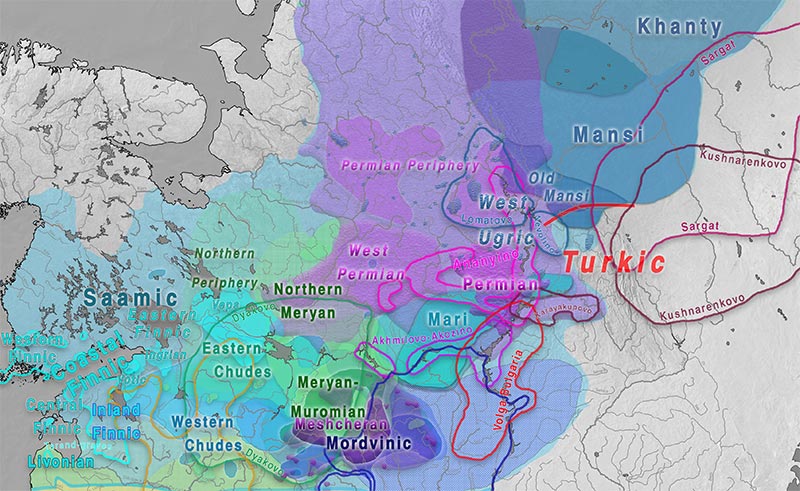
1.3. Turkic Contacts
Hungarian has a strong influence of “West Old Turkic” languages, including up to 419 borrowings, 72 of which are verbs (Berta & Róna-Tas 2011:1143).
NOTE. Some of these are possibly erroneous due to the use of outdated materials or questionable reconstructions; see e.g. Erdal’s (2019) criticism.
These loanwords include about 200 words of likely Oghur Turkic influence (showing rhotacism or lambdacism), which could have been acquired only through intense contacts* with Volga Bulgars – and also, but less likely, with their predecessors on the Eurasian steppes or with later surviving Bulgar communities on the Pontic-Caspian area, during the earliest Magyar expansions. These contacts might have started thus as early as the 6th century, or even earlier based on archaeology (see below kurgans with “moustache”).
*For comparison, Proto-Permic—supposedly in continuous contact with Volga Bulgars—shows 20 Bulgar Turkic borrowings (Róna-Tas and Rédei 1972). These exclude later borrowings, likely stemming from a period after the dissolution of the Bulgar empire, hence later than the 8th century.
Oghur loanwords cannot be attributed to other Turkic peoples in contact with Early Hungarians, like the Pechenegs, the Oghuz, and the Cumans. In fact, the authors cite only 37 certain and 2 debatable words of Cumanian origin. Hungarian–Turkic contacts reveal thus at least two distinct “Old West Turkic” layers, which supports a substratal influence of Volga Bulgars, and potentially also of other Turkic sources, distinct from the later specific long-lasting adstratal Cumanian influence.
Even more interesting is the (admittedly scarce) evidence of Bulgarisms among Turkic loanwords in Proto-Khanty (Savelyev 2013):
- PKh. *ćuḷći/*ćɨḷći ‘mouse’ ~ Chuvash šъrži ← PTurk. *sɨčgan.
- PKh. *saart ‘pike’ ~ Chuvash śъ˘rttan ← PTurk. *čortan.
- PKh. *jaaɣ ‘people, men’ ~ Chuvash jъ˘χ ‘kin, tribe’ ← PTurk. **juk.
These borrowings show regular dialectal correspondences and a wide distribution, unlike Kipchak borrowings, which show a more limited distribution—not reaching North Khanty—and irregular cognates, and which might belong (the earliest) to contacts with the Kimek confederation, but most of them probably to later intense contacts with Siberian Tatars.
These contacts would support two important details about Proto-Khanty: (1) its likely presence to the south(-west) of its current distribution, in line with the archaisms of (the earliest separated) Eastern Khanty; and (2) its relative chronology roughly coincident with the earliest Turkic expansions through Siberia, confirming the Iron Age estimates for the proto-language.
In turn, it has been suggested that some of the developments of Oghur Turkic might reflect an Ugric substratum, such as Common Turkic š → Oghur l, reminiscent of the evolution in Mansi.
NOTE. Today it is quite clear that there were multiple nomadic steppe populations preceding or coexisting with (Proto-)Bulgars, any of which might have triggered any of the Oghur developments. The proper temporal and geographical definition of language changes and communities and their contacts need further investigation. Recent writings like that of Salmin (2014, 2017, etc.) appear to continue decades-long (post-)Soviet traditions in many aspects, and offer thus little (if any) realistic support to the theory of earlier Ugric-Oghur inter-ethnic communities.
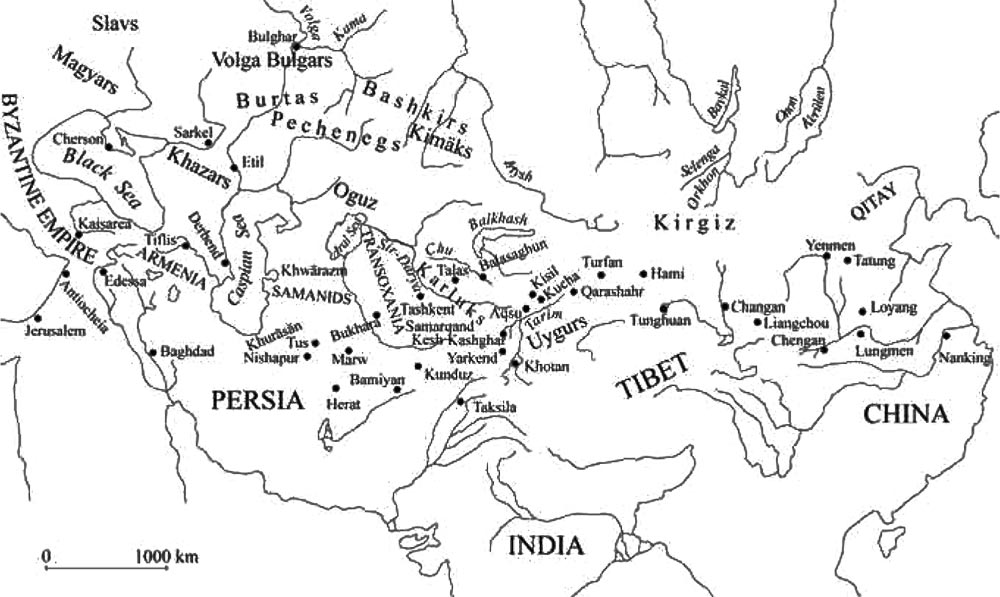
Furthermore, borrowing layers from (Indo-)Iranian or Turkic include words referring to horse culture, despite the oldest Ugric layer already showing horse-related vocabulary, which supports that Iranian and Turkic were the language families spoken by horse-riding nomadic peoples spreading through the steppes during the Bronze Age and the Iron Age.
Particularly striking in that regard is the lack of correlative Hungarian (or Ugric) influence on Chuvash, a language assumed to descend directly from Volga Bulgars, or on the language of Bashkirs, who are supposed to show acculturated Proto-Hungarian patrilineages (see below). This contrasts with the later Volga–Kama Sprachbund having clearly and strongly affected Mari, Permic, and Chuvash through convergence, and might suggest that Early Magyars formed a rather short-term community with strong Volga Bulgar and Turkic adstratal/substratal influences, which is relevant for the interpretation of “Mansi-like” hydrotoponymy in Eastern Europe.
On the other hand, some of the tribal denominations of Hungarians have parallels in Bashkir, such as Jenő ~ Yeney, Gyarmat ~ Yurmati, and this has been regarded as evidence for an early Bashkir homeland of the Hungarians (Róna-Tas 1997: 429-436). In fact, only Nyék and Mégyer are regarded as of likely Uralic origin, whereas the other five names are Turkish (for an etymological explanation of all, including Nyék, within Turkish military-related ranks, see e.g. Árpád 1997). Furthermore, the Bashkirs were identified with the Hungarians in the sources related to Volga Bulgaria (Róna-Tas 1999: 289–294).
NOTE. For a full, recent reassessment of relevant early written (Arabic) sources on Magyars and neighbouring Uralic or Turkic peoples, see Muslim Sources on the Magyars in the Second Half of the 9th Century: The Magyar Chapter of the Jayhānī Tradition, by István Zimonyi, Ed. Florin Curta, Brill (2015).
1.4. Palaeolinguistics
For borrowings of Proto-Indo-Iranian—affecting Pre-Hungarian, as well as Pre-Mansi and Pre-Khanty rather than Ob-Ugric (Holopainen 2015)—see the recent series of posts on Palaeolinguistics and the Uralic homeland, and also Holopainen’s Ph.D. thesis (2019).
The spread of Hungarians must have taken place in an association with various Turkic-speaking tribes, given the numerous borrowings (Berta & Róna-Tas 2011) including agriculture (búza ‘wheat’, gyümölcs ‘fruit’, alma ‘apple’), cattle breeding (bika ‘bull’, kecske ‘goat’, disznó ‘pig’, tyúk ‘hen’), religious concepts (ige ‘magical word’, ünnep ‘holiday; feast’, isten ‘God’) as well as family relations (gyerek ‘child’, kölyök ‘kid, puppy’, iker ‘twin’).
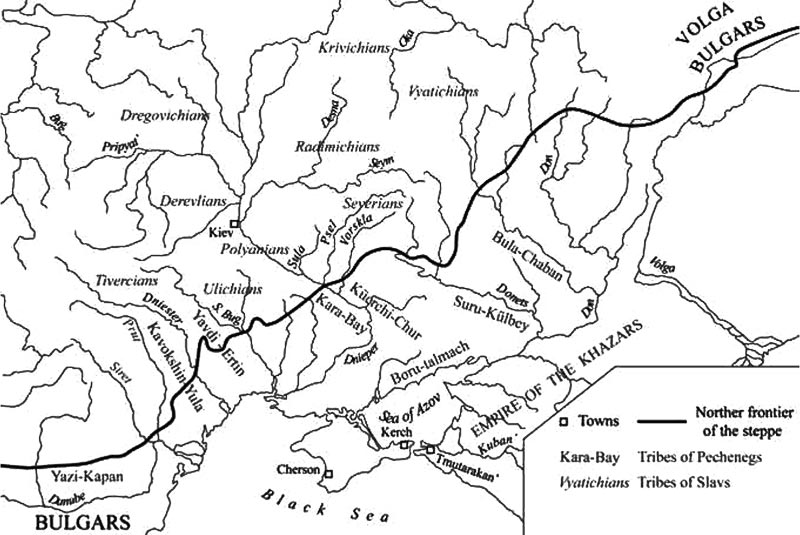
The borrowed words from Turkic appear to show a ‘more southern’ culture relative to the Proto-Hungarian one. On the other hand, if Oghur and other Old Turkic peoples represented a substrate to a Magyar elite—as suggested also by many other words without a clear vocabulary domain, including basic concepts and verbs—it is highly unlikely that there is a good cultural reason for the adopted vocabulary, and thus no clear conclusion (regarding cultural exchanges) can be drawn from it. Nevertheless, the little Turkic interference described for the Uralic-like Hungarian grammar suggests that, if there was such a substrate, the shifting group must have been rather small within a wider Hungarian-speaking community, or the shift must have occurred rapidly, or both (read more on language contact and change).
Quite relevant might be, however, the retention of Uralic vocabulary related to societal structure and religious practices, as well as to horsemanship, supporting the nature of Proto-Hungarians as (also southern) elites early on:
- Hu. vezér ‘chieftain’ ← vezet- ← PU *veti- ‘lead’.
- Hu. fejedelem ‘prince’ ← fő: fej- ‘head’ ← PU *päŋe.
- Hu. falu ‘village’ ← PUg. *palxV.
- Hu. ló ‘horse’ ← PUg. *luwV/*luxe.
- Hu. nyereg ‘saddle’ ← PUg. *närkV.
1.5. Onomastics
Traditionally, the Hungarian homeland is considered part of the steppe zones of Eurasia, hence probably impossible to precisely locate due to the continuous language shifts and population movements in the area, apart from a lifestyle that is particularly prone to place and river name replacements.
On the other hand, the core Mansi and Khanty hydrotoponymy has been invariably located to the south-west of their current respective areas. In fact, Smirnov (2012) shows that Old Mansi formants for hydronyms (cf. -ja, -mor for lakes, and tūr, tor ‘lake’) and toponyms (cf. -nar/-nyar/-nër? cognate with Ms. ńōr ‘mountain range, mountain’, or -chash/-chach/-shash for Ms. -chosh ‘stream’) are present in the central Urals—in the basins of the Tavda and Chusovaya rivers—as well as the southern Urals. Remarkable is the likely conservation of PMs. *ā where extant (Western, Eastern, and Northern) dialects show ō, apart from other PMs. formants (cf. *k/kh, *š/č, *ī̮/ē̮, …) where neighbouring northern dialects show change.
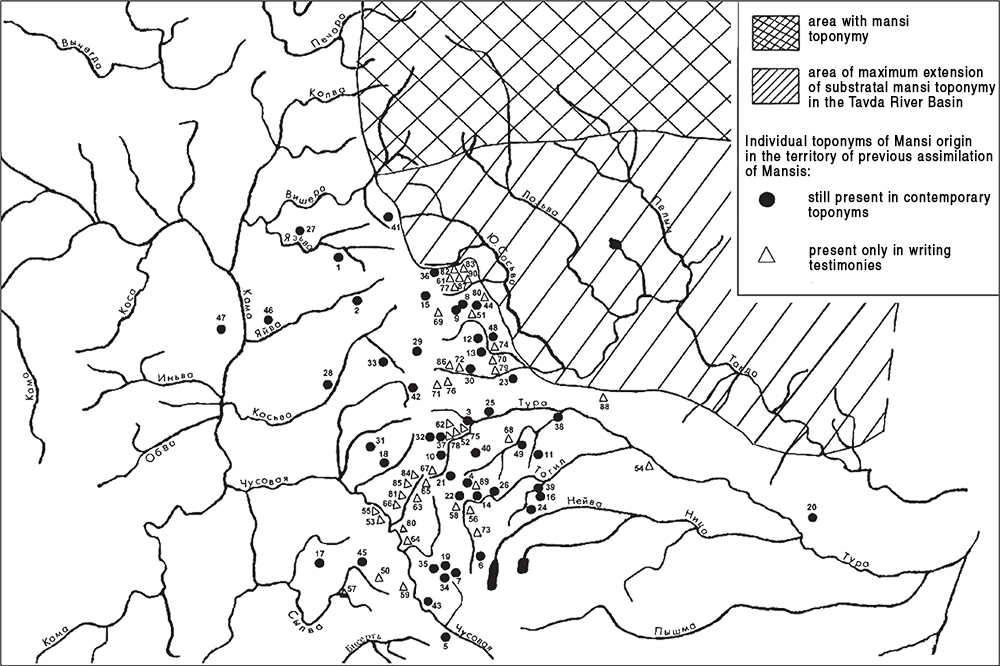
Nevertheless, Smirnov (2012) agrees with Matveev (2001–2014), refuting the proposal of Kannisto (1927) that the Mansi would have lived in a large area west of Urals, noting that those non-Russian toponyms of the Cis-Urals likely derive from extinct Ugric sources that were distinct from Mansi, Khanty and Hungarian alike. Such “West Ugric” toponyms certainly appear scattered in the territory of present-day Udmurtia, and they might have been even prevalent in that area in the past (Atamanov 2015), although this is disputed.
NOTE. Furthermore, non-Permic Uralic substrate of the Vetluga–Vyatka interfluve (cf. -ya/-yu, -ba/-va, -mas/-mash) is probably to be identified with Proto-Mari (Smirnov 2015), which suggests that the population of the Vetluga Basin was Mari- or possibly Mordvin-speaking before it was replaced by Permic, which in turn would have spread westward from their core area in the Vyatka Basin.
As Saarikivi (2020) notes, the general, non-specific nature of the ancient “West Ugric” Cis-Uralian toponymy does not discard that a small Proto-Hungarian territory formed part of it, given the well-delimited south-western core of the Ugric Sprachbund:
The mutual contacts of the Ugric languages point to their one-time presence in the Southern Urals region, in-between the taiga and the steppe, where they probably formed a kind of a Sprachbund sharing numerous innovations. Certainly, modern Hungarian has preserved least of them, but there must have been intermediate (Proto-)Hungarian dialects spoken in the Urals and west of it. Without doubt, also Khanty and Mansi have southern roots, but their speakers have subsequently assimilated notable amount of Northern groups and this twofold origin is today reflected in both the lexicon of the Ob-Ugrian languages, as well as some features of mythology.

The historical accounts on Meshchera people in Bashkiria, Tatarstan and more western regions have traditionally held them to be connected with the prehistory of Hungarians, based on toponyms like Možar, Možarovo, Močar, Mučar (cf. Róna-Tas 1999: 299), and probably also on the belief that Levedia should be located to the north-west of the Volga. Neverhteless, the recent interpretation of Rahkonen (2009, 2014) explains more elegantly the etymology of Meshchera place- and river-names as derived from a Permic variety (read more about Meshchera hydrotoponymy).
A more recent location of the Proto-Hungarian homeland to the south-west of the core Ugric area is supported by (Riccardus’ reports of) the accounts of the Dominican friar Julian after his return at the end of 1235 from his travel to the Volga Magyars, with which Tatars were familiar. These Volga Magyars probably referred to a community from the Belaya River Basin (Antonov 2012, pp. 34, 71-73), although there are many different interpretations as to their precise location.
Furthermore, The Chistopol inscriptions in Tatarstan show the endonym Majar (i.e. Magyar) as a denomination of deceased people (Róna-Tas 1999: 301).
2. Archaeology and Genetics
The following accounts include excerpts of Russian literature, apart from other added sources expressly cited. Lacking precise radiocarbon dates for many assumed population movements, its chronology should be taken with a pinch of salt.
2.1. Gorokhovo–Sargat Culture
The now mainstream (post-)Soviet views of the Hungarian ethnogenesis (cf. Khalikova 1976, Khalikov 1985, Garustovich & Ivanov 1992, Mogil’nikov 1994, etc.) posit an ultimate Early Proto-Hungarian origin in the nomadic Sargat culture (ca. 500 BC – AD 200/300). The following are excerpts from Drennan, Hanks & Peterson (2011), with modifications:
The Gorokhovo–Sargat developments are entrenched in the socio-political transitions within the larger West Siberian and Trans-Urals regions. Mobile pastoralism and mounted warfare as significant technological developments transformed regional and interregional interaction, conflict and trade (Bokovenko 1996; Kradin 2002; Hanks 2002). This period represents large-scale, labor intensive, funerary monument construction. In the Tobol, Ishim and Irtysh river valleys and their tributaries, permanent fortified centers (1 ha.) with hinterland clusters of non-fortified settlements (2-6 ha.) were spaced 30-40 Km apart.
The economy was based on pastoralism (horse, cow, sheep and goat), with evidence for fishing, hunting, and gathering, as well as agriculture, representing the ‘northern periphery of the nomadic world’ (Koryakova and Epimakhov 2007: 277). Buldashov (1998) distinguishes in Gorokhovo phase burials a society of upper, middle and lower level ranked individuals, with a societal stratification that was, in its late phase, apparently centered on ancestral lines of social authority and power (numerous graves appear surrounding the main burials).
Especially strong were the interregional contacts with southern steppe groups – Sauromatians, Sarmatians, Saka and Alans. This brought about the diffusion of similar mortuary rituals and valuable, non-local trade items (Koryakova and Epimakhov 2007: 328– 330).
It has been suggested that the social organization of Gorokhovo–Sargat is reminiscent of the previous Sintashta and Trypillia periods (Drennan, Hanks & Peterson 2011), and that horseback-riding allows for supra-local connections and participation in inter-regional trade and possibly foreign military campaigns, which supports both the possibility of marked Y-DNA bottlenecks based on the elites as well as the infiltration and expansion of ‘foreign’ patrilineages.

Further support for the central steppe origin of Hungarian might be found in (Pre-)Alanic/”Pre-Ossetic” loans—with a likely origin in the (Pre-)Scythian expansions—almost exclusively found in Ugric dialects, as opposed to Uralic dialects to the west of the Urals (cf. Holopainen 2019).
From Siberia, there are only a few Sargat samples investigated, all of them with Y-chromosome haplogroup predicted based on STRs [Nevgen]. These include:
- Pogorelka-2, from the Baraba forest-steppe, showing two R1a samples [Nevgen Prob. 99%], and two N1a-Z1936?(Z1934?/Y13850?) [Nevgen Prob. 20% / 3%] by Pilipenko et al. (2017).
- Vengerovo-6, from the Baraba forest-steppe, with three N1a-Z1936?(Z1934?/Y13850?) [Nevgen Prob. 13% / 7%] by Pilipenko et al. (2017).
- Gaevskij 1, from the Cis-Tobol Tyumen forest-steppe, with one R1a sample [Nevgen Prob. 80%], and one N1a-Z1936?(Z1934?/Y13850?) [Nevgen Prob. 8% / 2%] by Sharapova et al. (2020).
2.2. Middle Volga Early Stage (“Heraldic Type Belt Sets”)
The Gorokhovo–Sargat group evolved into the likely Proto-Hungarian-speaking Kushnarenkovo culture (AD 6th–7th c.). There is a gap between both cultures of ca. 200 years, which could possibly be linked, according to Türk (2018), by the “Proto-Kushnarenkovo” Bakalskaya culture (ca. 4th–6th c.). The Kushnarenkovo-associated Karayakupovo group appeared in the Southern Cis-Urals, synchronous with the development of the Upper and Middle Cis-Kama Lovatovo culture (Agafonovo stage) and Nevolino culture (Bartym stage).
The following are excerpts from Vyazov et al. (2019), with modifications:
In the middle of the 6th century, a new migration wave reached the steppe region. It was forced by aggressive Turkic campaigns, which led to the establishment of the Turkic Khaganate. After the Turkic military elite fashion, a new style of belt sets decoration, with belt plates shaped as a heraldic shield, spread over the steppe zone of Eurasia, establishing a fashion that became popular in the steppe and forest-steppes. In the Middle Volga region, this period was a time of asynchronous decline of the Imen’kovo culture followed by depopulation of the region.
The Kushnarenkovo newcomers appear to have lived in contact with the Imen’kovo population from the southern bank of the Kama River to the Samara Luka region, as shown by finds of Kushnarenkovo potsherds in Imen’kovo dwellings (Kazakov 1981). After the collapse of the Imen’kovo culture, the Kushnarenkovo people remained in the Middle Volga region south of the Kama River, in the Belaya River Basin. The subsistence system of this population is unknown. The presence of very thin occupational layers of the Kushnarenkovo habitation sites is consistent with a relatively mobile, semi-nomadic lifestyle.
NOTE. This nomadic way of life might be thus compatible with the absolute lack of hydrotoponymy unequivocally identifiable as Hungarian. On the other hand, based on their assumed long-lasting presence in certain territories of the Volga–Kama area—like the Trans-Volga/Kama River Belaya Basin—it is striking that a continued habitation of “Magyars” between the mid-6th century and possibly up to (at least) the end-13th century, according to historical sources, would not have left any remains. This would give more (a priori or “anthropological”, as opposed to purely linguistic) support to the identification of the “West Ugric” toponymy as closer to or including Proto-Hungarian.
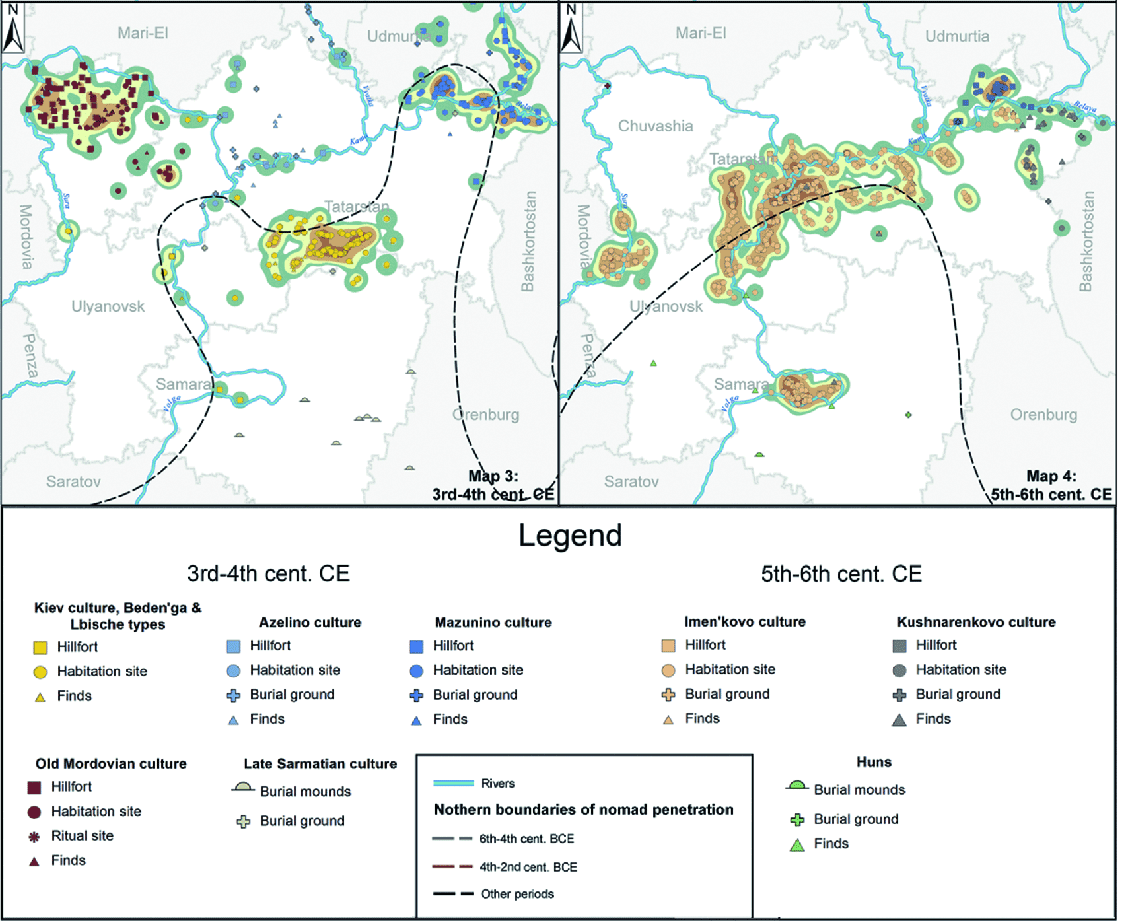
To the west of the Kushnarenkovo cultural area, on the left bank of the Volga, several very rich burials of the nomadic aristocracy were found. A set of finds called the “Burakovo hoard” and another discovery in the vicinity of Ulyanovsk (Mukhametshina 1999; Gismatulin 2006) include “heraldic type” golden belt attachments dated to the middle of the 7th century, probably originating from a destroyed burial. Another group of nomads appeared at the same time or a little later on the right bank of Volga, as indicated by the Shilovka burial mounds (Bagautdinov et al. 1998).
From the Cis-Urals, the recent Csáki et al. (2020) report one Early Nevolino Phase I sample from Brody (ca. AD 300), of hg. N1a-Y9022 [SNP, not corroborated by FTDNA], as well as two Nevolino samples from Bartym, Phase II, one (ca. AD 510) of hg. R1b-M269 [SNP, not corroborated], and another one (AD 5th-6th c.) of hg. R1b(xL151) [SNP, confirmed by FTDNA, contradicting Nevgen’s estimation of hg. N-Tat, with Prob. 56%].

2.3. Middle Volga Late Stage (Khazar Period)
In a second stage (AD 8th–9th c.) ethnocultural innovations are seen in the Volga–Kama and Cis-Urals, at the same time as the likely multi-ethnic Volga Bulgar society formed. At this point, some of the previous inter-group trade contacts appear to stop, and the influence of the (also multiethnic, probably mainly Turkic-speaking) Saltovo-Mayaki culture reaches the Kushnarenkovo-related Karayakupovo group and up to the Lomatovo culture (Chichko 2018).
The following are excerpts from Vyazov et al. (2019), with modifications:
The first period (ca. AD 690–750) of this recolonization of the Volga after the collapse of Imen’kovo was probably initiated by nomads of Turkic (Khazarian and Bulgarian) origin (so called Novinki type): their burial mounds appeared along the Volga, in Samara Luka, and near Ulyanovsk (Matveeva 1998; Bagautdinov et al. 1998). Small groups of sedentary people, practicing different burial rites and probably of different origin, also appeared in the Volga valley, occupying areas near the nomads as revealed in the Zhiguli archaeological complex in the Samara Luka area (Ponomarenko et al. 2015).
The second period (ca. AD 750–850) was influenced by the defeat of the Khazar Khaganate by Arab forces in AD 737. In AD 740–750, the area of the Saltovo-Mayaki culture became the source of a new wave of migration to the Middle Volga region (Kazakov 1992). The number of occupation sites increased and the cultural traits of the sedentary population of the region became more diverse in the 8th century. The newcomers moved from the Don basin (Saltovo-Mayaki culture) to the west of the Sura river (likely inhabited by Mordvins) and the Middle Kama region (Nevolino culture).
At the end of the 8th century, a new group of people appeared in the Trans-Volga. Descendants of the Kushnarenkovo culture, recognized as early Hungarians, moved through the Middle Volga along their migration to the Danube (Kazakov 1992).
The occupation sites of the first two periods, from the end of the 7th to the middle of the 9th centuries, have comparatively thin occupational layers poor with finds (Stashenkov 2010), consistent with temporary camps. Most of the occupation sites were situated on high terraces of the Volga and on the banks of second-order ravines, within 10 km from the river. Many sites were associated with iron ore extraction and iron smelting (Vyazov and Semykin 2016). The newcomers of the Saltovo culture were agriculturalists who used ards with iron ploughshares as a plowing tool (Khuzin 2011).
The third period of migrations to the Middle Volga from AD 850 to 910 was associated with the decision of the Khazarian rulers to convert to Judaism (Khuzin 2011). As a result, the 9th century was a period of mixing of different cultural groups in the Middle Volga region. The most numerous were migrants with Saltovo cultural traditions (probably mainly of Turkic language) and Uralic-speaking newcomers from the Middle Kama. Archaeological sites include burial grounds and settlements along the Volga and also in the Trans-Volga region, around the future city of Bilyar. Both groups were comparatively numerous, for example, the Tankeevka burial ground contained more than 5000 graves (Khalikova & Kazakov 1977). The territories to the north of Kama remained unpopulated. The total number of sites increased, at least some were used as year-round settlements and some were fortified (Semykin & Matveeva 2010).
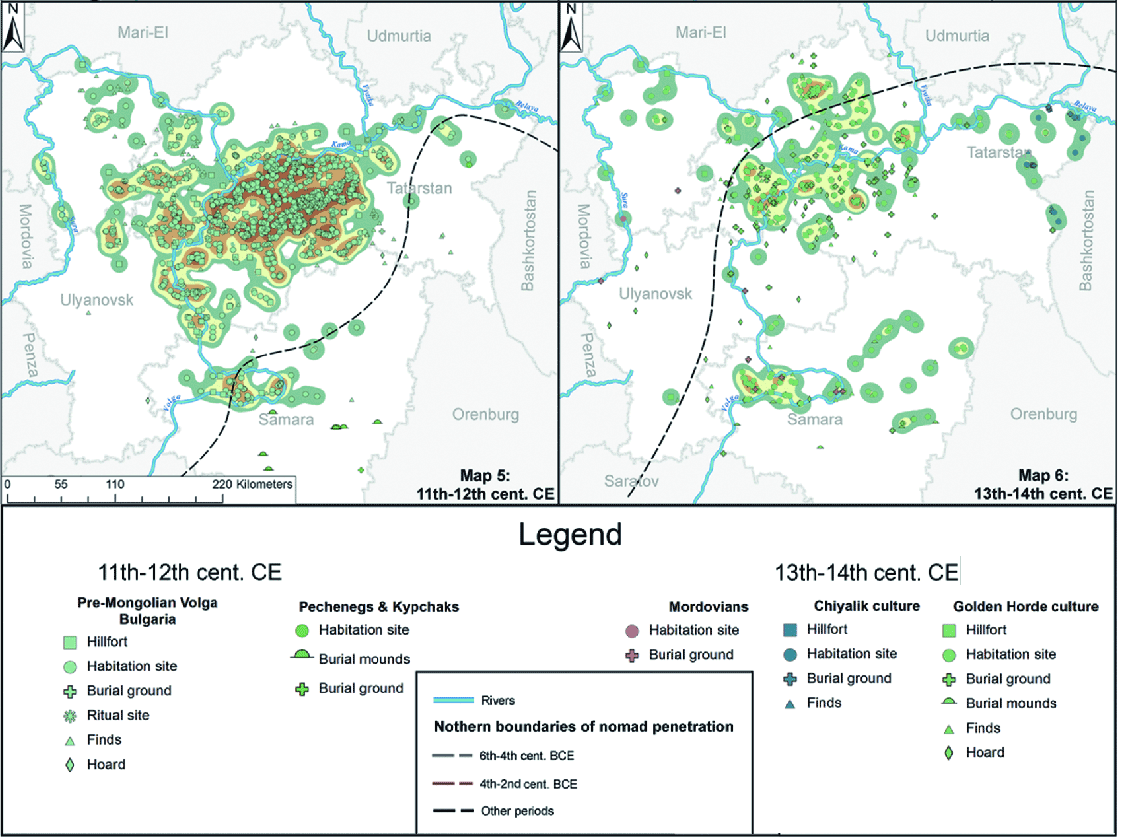
The only investigated Trans-Uralian site in Csáki et al. (2020) is Uyelgi, a cemetery associated with the Late Kushnarenkovo period, with materials showing parallels with archaeological findings of the Carpathian Basin during the Hungarian Conquest (end-9th–10th c.). Nevertheless, the first use of the cemetery coincides with the arrival of eastern influences.
The earliest samples (likely from the 9th century) are Uyelgi21, showing mtDNA D4j, a haplogroup with a typically Siberian distribution (see in Haplotree); and Uyelgi22, showing hg. H3b+16129, with H3b found to date in Bell Beaker and derived cultures.
The authors note that the mtDNA of Uyelgi21 clusters with one modern-day Hungarian, and that this sample shows a direct cultural connection with the Srostki culture – supposed to be at the origin of the Turkic expansions behind Tatars and Bashkirs. From the supplementary materials:
One sample (Grave 5 of Kurgan 11) of this earliest horizon (720–941 cal. AD) should be mentioned separately. The archaeological findings of Srostkinsky types and the secondary filling of the kurgan dated this tomb to the middle and second half of the 9th century AD. The further archaeological features, as the shallow tomb, bone buckle and gilt belt end, date the grave to the 10th–11th centuries AD. Based on this fact, the archaeologists suppose that in this tomb the earliest newcomer of eastern origin was buried, which signals the earlier appearance of this new population from the East dated to the second half of the 9th century AD.
Of the 17 reported males (ca. AD 800–1100), 15 show haplogroup N [SNP, STR], 9 of them confirmed by FTDNA. Possibly 12 (or more) of these are of hg. N1a-Z1936 [STR], one certainly below N1a-L1034 [SNP], and the rest of them are estimated with Nevgen to be N1a-Y13850, with varying degree of confidence. STR coincidences suggest that at least seven might belong to the same haplogroup, i.e. N1a-L1034 like Uyelgi2 (and not the authors’ estimated N1a-Y24361), also shared with an Early Magyar individual (TÓ/1) from the Central Tisza. The authors explain (?) the archaeological findings of the cemetery as follows:
The findings from the 9th century AD of the Uyelgi cemetery belong to the late Kushnarenkovo culture, which indicates the autochthon component in this complex population. The Gaultry cemetery and several cemeteries of Bashkortostan from 9th century (investigated by Niyaz A. Mazhitov) show similar characteristics as well. The experts named these as “Ural component” because of the local ornament and moulding of the belts, which differs from the Srostki culture from the Altai/Minusinsk region and from the Perm style of the west foreground of Ural Mountains which styles are the closest to the ancient Hungarians’ culture. Their co-appearance attests to the mixed character of the site, but the other hand, the affinity of the 10th century AD Hungarian Conquerors needs further investigation and explanation.

From the reported autosomal data, Uyelgi4 (ca. AD 1000), of hg. G2a-L1266 [SNP, confirmed by FTDNA as G2a-FT34], shows a clear ancestry shift towards the Saka, which might be interpreted as a renewed Turkic influence under the Kimek–Kipchak confederation, an influence possibly visible in the hg. J2 [STR, confirmed by FTDNA as J] of the coeval Uyelgi11, too. However, despite the autosomal data, G2a-L1266 is also found in two early Magyar conquerors sampled from the Upper Tisza (ca. AD 920), which might suggest —as in the case of N-Z1936 subclades—either (1) that the ancestry changes might have been due to exogamy among patrilineages that were already “local”, or (2) that different waves of Turkic peoples of varied Y-DNA lineages were assimilated to expanding Magyars.
Attesting to a different late influence in the local population, the coeval Uyelgi10, possibly also of hg. N-L1034 [STR], shows what appears to be a shift from the likely generalized Central Corded Ware cline (Okunevo-like ancestry) of this 10th-11th c. late Kushnarenkovo population towards a Northern Corded Ware cline and thus Circum-Arctic (Bolshoi-like) populations, where Modern Mansi samples cluster.
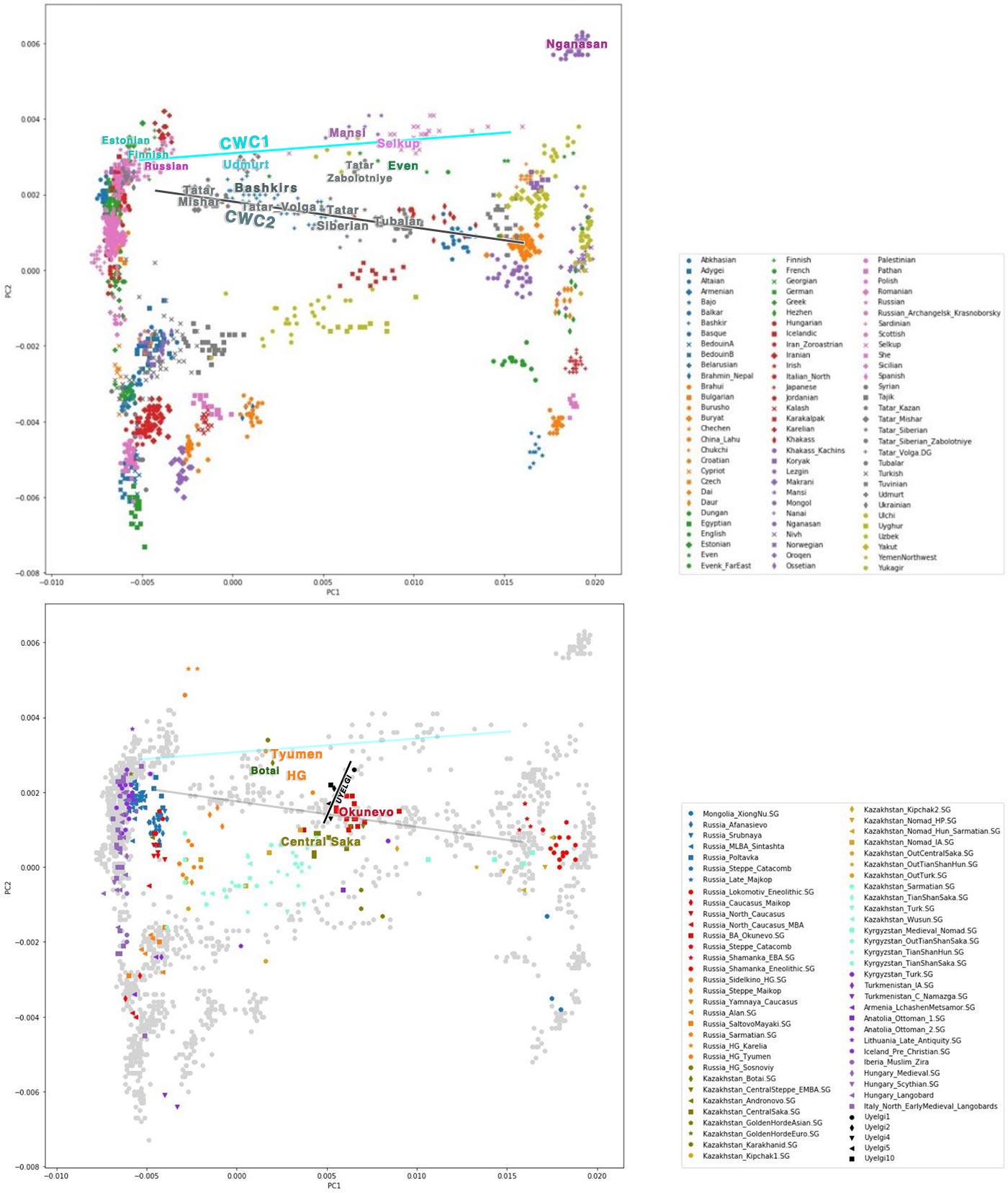
On the Cis-Urals, Csáki et al. (2020) report one Late Lomatovo individual from Bayanovo (ca. AD 820), of hg. N-Y9022 [STR], which suggests continuity with the previous Cis-Uralian genetic stock, despite the reported incursions from the south. On the other hand, this cemetery belongs to a southern variant that shows a close cultural connection to the neighbouring Nevolino culture, and FTDNA reports that Sukhoy4, associated with the Late Nevolino culture in the Lower Kama region (AD 7th-8th c.), also shows hg. N.
3. Wrap-Up
Findings from Csáki et al. (2020) seem to strengthen the initial assessment of Féher et al. (2014)—whereby the shared N-L1034 between Proto-Hungarians and Mansi revealed a complex genetic population history rather than common phylogenetic tree—and is at odds with the more recent change of heart in Post et al. (2019) and partially also in this paper, where some link is hypothesized to exist between N1a-Z1936 and Ugric (or even Uralic??).
Contrasting with that vague, overreaching interpretation, the samples published involve mainly a Trans-Uralian Late Kushnarenkovo group, and come from a single site during the span of around two centuries. The earliest samples belong to the second half of the 9th century—postdating thus the presence of historical Magyars in the North Pontic steppes—and show already a likely genetic intrusion from the east, associated with the Srostki culture.
Given the late sampling and poor coverage of the reported individuals, in line with previous reports from the Sargat culture, I am still not convinced that any firm conclusions can be drawn at this point. Main problems with traditional accounts based on archaeology, coupled with recent linguistic assessments and genetic investigations, include:
3.1. Haplogroup N-BY1233/Y9022
The most relevant piece of genetic information from Csáky et al. (2020), in my opinion, comes from the Cis-Urals, with a quite early sample of hg. N-Y9022[STR]—an ‘early’ offshoot of N-L708, on par with N-L1026—before the arrival of Sargat influence. Together with the basal N-L1026* BOO samples, these Cis-Uralian N-Y9022 give support to the Urals and West Siberia as a likely source rather than sink of N subclades. This could at least partially confirm my previous (2017-2018) assessment of how hg. N became integrated into different Uralic-speaking groups, “pushed” westwards by the multiple nomadic intrusions on both sides of the Urals.
Nevertheless, the presence of two samples of hg. R1b-M269 in Nevolino might be connected to other R1b individuals that appear among steppe nomads during the Iron Age, such as the nearby I0575, an Early Sarmatian from Pokrovka (ca. 300 BC), of hg. R1b-Z2103 (KMS62+). Depending on the specific subclades found and their relationship to Bronze Age steppe populations, ‘archaic’ N1a-L708 lines around the Urals might indeed belong to westward nomadic migrations, too, as many other N lineages already found first in the east.
In fact, it is well known that during and after the disappearance of the Late Ananyino culture, the Early Sarmatian Prokhrovka culture (4th–2nd century BC) spread northward of the Kama River (Chizhevsky 2017) through both cultural contacts and quite likely physical movement of nomadic peoples. This is supported in linguistics by the strong Iranian (Alanic) influence on Proto-Permic (cf. Holopainen 2019: Appendix I), and by the known expansion layers of Permic from its southern core to the north-east and north-west.
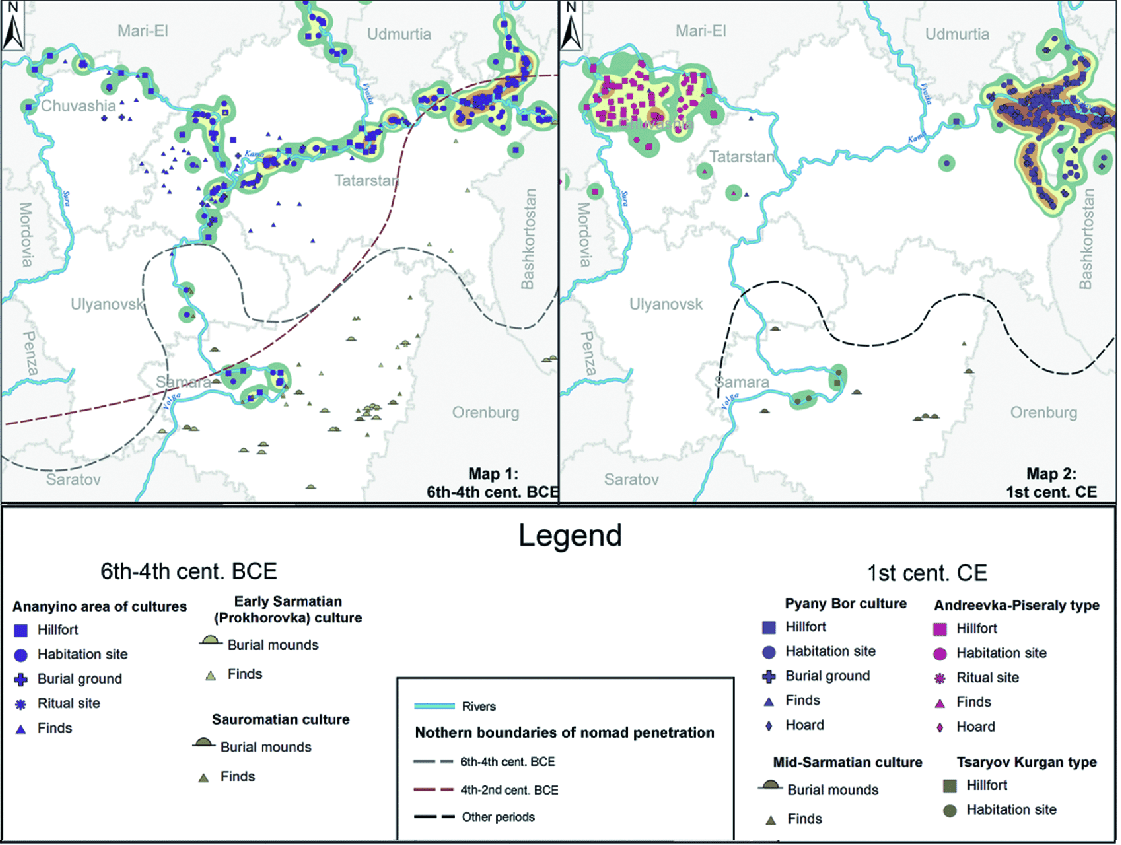
On the other hand, the Middle Bronze Age Mezhovskaya culture already showed hg. R1a-Z280 and R1b-M269 lineages, which—together with the shared “archaic” R1a-Z280 and R1a-Z93 haplotypes among modern Maris and Mansis—might suggest partial genetic continuity of all haplogroups involved in EBA population movements around the Central and Southern Urals, hence a potential continuity of a “local” haplogroup N-L708, too, in regions that have not been sampled yet.
Without autosomal analyses and proper geographical and temporal transects with quality genomes, it is impossible to say.
3.2. Haplogroup N-Z1936
If the Iron Age Sargat culture corresponds to the Early Proto-Hungarian expansion, it shows a mix of R1a (most likely R1a-Z93, probably including R1a-Z2123) and N (possibly N1a-Z1936) from the eastern Baraba to the western Ural–Tobol–Irtysh forest-steppe areas. R1a-Z280 lineages were most likely continuously present during the Bronze Age in the forest-steppes around the Central and Southern Urals, too.
Given the assumed westward migration waves of bearers of Eurasian nomadic cultures, the situation of Uyelgi might reflect the evolution of eastern populations under increasingly N1a-Z1936-rich Y-DNA bottlenecks. As far as I know, it remains unexplored in academic research how the Srostki materials fit into the development of the Kushnarenkovo group among the surrounding “(Proto-)Kushnarenkovo” Bakalskaya, Potchevaskaya, and Molchanovskaya cultures, or how the social stratification proper of Gorokhovo–Sargat (comparable to that of Trypillia and Sintashta–Potapovka societies, v.s.) might have affected language change or acculturation of the population in its different areas.
Furthermore, those Uyelgi samples appear along a Central Corded Ware cline, whereas the “local” influence of a Northern Corded Ware cline (becoming closer to the Bolshoy cluster) appears only in a later period, represented by Uyelgi10. This Uyelgi Central–Northern CWC cline leads to modern Zabolotnye Tatars, who can be inferred to represent acculturated Early Modern Ugric and Samoyedic peoples, in turn acculturated non-Uralic-speaking populations from the Tundra. In other words, the core Uyelgi admixture—possibly representing wider Ugric-speaking areas of the Trans-Urals forest-steppes—did not look like Modern Mansi at all still in the 11th century, which means that vast Ugric-speaking areas must have continued—as expected—Corded Ware-related ancestry, whether the recovered Iron Age or medieval patrilineages are ultimately derived from local Siberian populations, from Sargat elites, or from the Srostki culture…
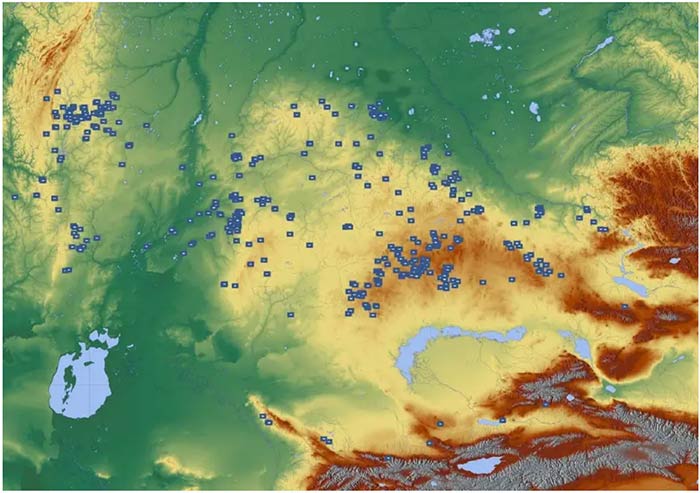
The predecessor of Old Hungarian must have been spoken in various areas of the West Eurasian steppes and forest-steppes for centuries, most certainly in Eastern Europe. In Hungarian historiography, the areas of Magna Hungaria, Levédia and Etelköz are traditionally mentioned, denoting areas in the Volga region, Sea of Azov / Crimea and Don–Dnieper area respectively. Some of these territories have burial findings which have been traditionally associated with Trans-Uralian groups (Róna-Tas 1999), but the whole Volga area was probably Turkic-speaking during the 8th and 9th centuries, from the Saltovo complex to the Khazar Khaganate. In fact, based solely on archaeology, the dispersion of kurgans with “moustache” points to an early incursion of Turkic (rather than Iranian) peoples through the steppes and forest-steppes starting as early as the 4th century (Grudochko 2019).
Further, it is well established in Hungarian historiography that Pecheneg and Oghuz Turks settled in the Pannonian Basin in the same period as Early Magyars, to the extent that place names specifically related to Pechenegs have been pointed out: settlements Besenyő in Borsod, Heves, Bihár, Somogy, etc. (cf. Kniezsa, 2000: 438).
NOTE. On the other hand, most if not all 1,500 Slavic loans in Hungarian seem to postdate the “Conquest”, with the oldest lexemes being inferred to belong to “Pannonian Slavic” (Richards 2003), a likely amalgam of Southern (“Proto-Serbocroatian”) and Western (“Proto-Czechoslovak”) Slavic dialects. No East Slavic or Proto-Slavic borrowings can be reconstructed, which helps discard the presence of Slavs close to the steppes during the Hungarian migrations, contradicting traditional (baseless) attributions of cultures like Saltovo-Mayaki or Imen’kovo as Slavic-speaking.
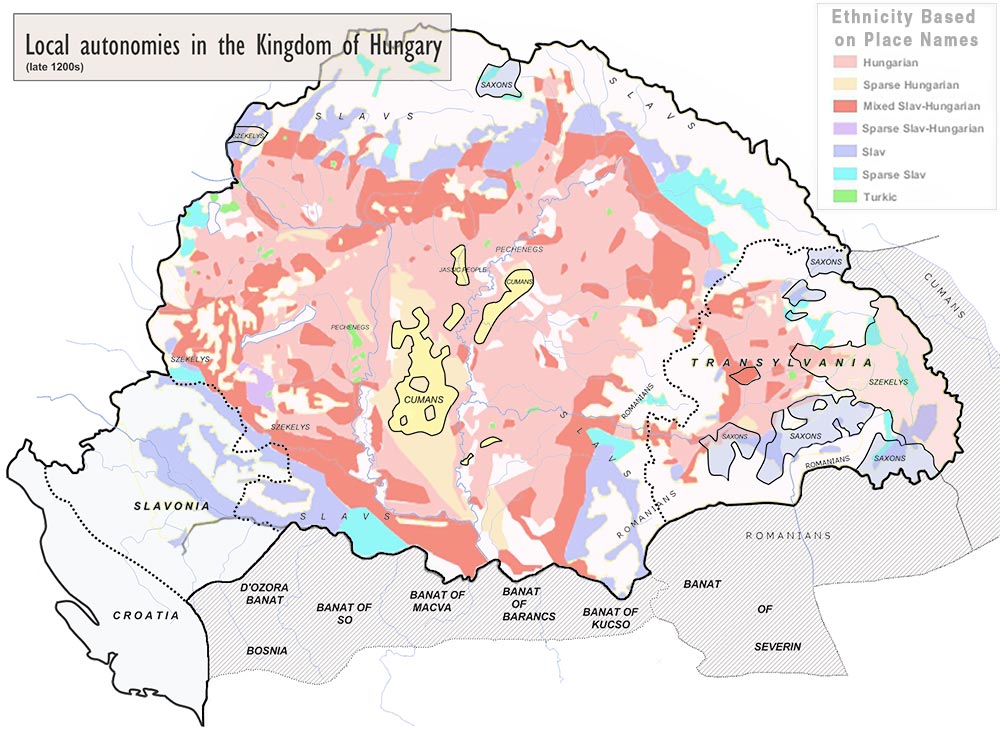
The Uyelgi samples suggest that N1a-Z1936 (Y13850) represented already the majority of the patrilineages in some of these areas, so an implied later shift to Turkic languages would require an unlikely explanation involving cultural diffusion and acculturation in situ, to explain the continued prevalence of hg. N1a-Z1936 among Bashkirs and Tatars relative to Ob-Ugrians. Even more difficult to explain is the lack of any specific Hungarian (or general Ugric) linguistic influence described as potential substrate of either Bashkir or Tatar dialects, contrasting with the noticeable effects of the Volga–Kama Sprachbund (see above).
Furthermore, assuming that N1a-Z1936 (and particularly N1a-Y13850) is a Kushnarenkovo-associated lineage with an ultimate origin in the Sargat culture, only later incorporated into Mansi- and Khanty-speaking communities, would clearly contradict an ancestral link between this haplogroup and Proto-Ugric (not to talk about Proto-Uralic…), despite a TMRCA estimation of ca. 2000 BC, quite fitting for the disintegration of the Ugric Sprachbund.
NOTE. The presence of N1a-Z1934 in the area of “West Ugric” toponymy up to the northernmost areas—where no Turkic (or ancestral Uralic) influence is known—is particularly puzzling, and might support any of the following: (1) an ancient substratal presence of those lines on both sides of the Urals, between the known Middle Bronze Age Bolshoi N-L1026* to the north and Iron Age Nevolino N-L708 to the south; (2) an origin of the dispersal of both, Ugric (including both Pre-Hungarian) and this haplogroup, from a small region of the Central Cis-Urals; or (3) a ‘recent’ incursion of Ugric dialects from the Central/Southern Trans-Uralian steppes and forest-steppes to the north-west, accompanied by these lineages. Lacking an appropriate genomic sampling and an accurate relative linguistic chronology, it is impossible to even speculate what this toponymy actually represents, and how it relates to the non-Uralic stratum of North-East Europe and Siberia.
Conversely, assuming that N-Y13850 lineages represent the incorporation of Turkic peoples among Proto-Hungarians, and later regional bottlenecks in particular the arrival of the ancestors of Bashkirs and Tatars—probably the Kipchak population living around the Irtysh Basin since the 6th century, whose expansion was ultimately linked to the Srostki culture—might solve most linguistic problems posed by their presence among radically different linguistic groups, since the push of the Kimek–Kipchak confederation is known to have forced the migration of the Pechenegs, in turn triggering the migration of Magyars from the north Pontic steppes into the Carpathian Basin.
However, it is very likely that—akin to other Iron Age or later population movements—the final situation will reveal complex layers of gradual population admixture and haplogroup replacement events between Turkic- and Uralic-speaking peoples, rarely amenable to simplistic ethnolinguistic identifications more proper of earlier periods.
For comparison, this is my latest version of the map (mid-2019) of likely presence of N subclades during the Late Bronze Age:
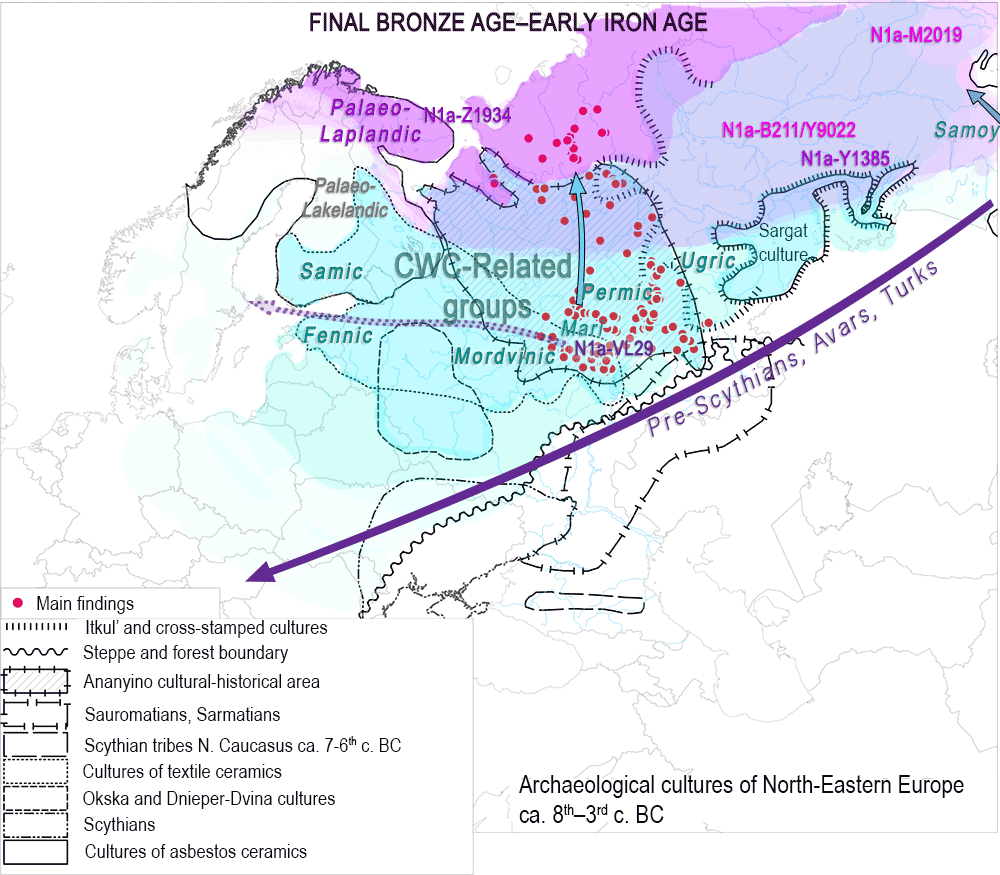
3.3. Conclusion
In any case, the presence of likely N1a-Y13850* and N1a-Y13850(xL1034) apart from N1a-L1034 among Early Magyars support that N1a-Y13850-rich populations formed part of the expanding Early Magyar tribes, hence possibly also of Proto-Hungarians.
The main problem I find is that N1a-L708 subclades (and N1a-Z1936 in particular) among Uralic-speaking populations could be previously interpreted as I1 among Germanic peoples: an early infiltration and expansion of hg. N in the EBA Central/Northern Cis- and Trans-Urals. They could have originally stemmed from populations speaking now extinct North-East European / West Siberian languages—in line with the known influence and hydrotoponymy outside of the core southern areas of Uralic dialects—with later infiltrations and migrations as part of (already acculturated) Uralic-speaking peoples, hence their limited or absent linguistic impact outside of those territories.
However, all recent papers published on modern distribution and ancient samples of hg. N keep suggesting something different: that the presence of hg. N1a-Z1936 among Hungarian Conquerors and Ugric peoples is more akin to the prevalent hg. E1b found among Iberian Goths, or the prevalent hg. J among Iberian Romans: while they prove a clear link with distant cultures directly related to them, the late incorporation of these patrilineages into the source populations cast doubt on their previous ethnolinguistic attribution. In that regard, and contrary to my previous thoughts on the matter, it is becoming similar to the surprisingly late infiltration of hg. N1a-VL29 among Finno-Permic groups, in a situation also reminiscent of different Iron Age and medieval Levantine haplogroup expansions throughout the Mediterranean (such as J and E subclades).
Based on the most likely linguistic contacts of (Pre-)Proto-Hungarians, one cannot expect to solve the question of Magyar origins east and (or?) west of the Urals without solving the questions of Ugric, Permic, and Turkic expansions first.

References
- Abondolo, Daniel. “Introduction [to the Uralic Languages].” Routledge, 1998. 1-42.
- Ánte, Ante Luobbal Sámmol Sámmol. “Studies in Uralic etymology II: Finnic etymologies.” Linguistica Uralica 50.1 (2014): 1-19.
- Антонов, Игорь Владимирович. Башкиры в эпоху средневековья:(очерки этнической и политической истории). Izdatelʹ IP Galiullin DA, 2012. Link at Baskhort.org.
- Árpád, Berta. “Eltérő nézetek a magyar törzsnevek eredetéről.” Honfoglalás és nyelvészet (1997): 211-21.
- Chichko (2018) = Чичко, Татьяна Вячеславовна. “Magna Hungaria и ее связи с синхронными государствами Евразии.” Археология евразийских степей 6 (2018). Link at CyberLeninka.
- Chizhevskij (2017) = Чижевский, Андрей Алексеевич. “Памятники позднего периода ананьинской культурно-исторической области.” Археология евразийских степей 4 (2017). Link at CyberLeninka.
- Csáky, V., Gerber, D., Szeifert, B. et al. Early medieval genetic data from Ural region evaluated in the light of archaeological evidence of ancient Hungarians. Sci Rep 10, 19137 (2020). https://doi.org/10.1038/s41598-020-75910-z. Also referenced is the supplementary information from its preprint Csáky et al. bioRxiv (2020).
- Csúcs, Sándor (2007): ‘Permi-magyar nyelvtörténeti párhuzamok’, Nyelvtudományi közlemények 104. Budapest, 86-123.
- Drennan, Robert D., Bryan K. Hanks, and Christian E. Peterson. “The comparative study of chiefly communities in the Eurasian steppe region.” Social Evolution & History 10.1 (2011): 149-186. Link at ResearchGate.
- Grudochko, Ivan V. (2020): Kurgans with ‘Moustache’ – The epoch of the late prehistory and Early Middle Ages of the Ural-Kazakhstan steppes (4th–7th AD). Archaeological Studies of PPCU Institute of Archaeology Volume 16. Bölcsészettudományi Kutatóközpont. Magyar Őstörténeti Témacsoport Kiadványok Volume 9.
- Holopainen, Sampsa (2015): ‘Indo-Iranian loanwords in the Ugric languages’, Poster presented in Pavia summer school for Indo-European Linguistics.
- Holopainen, Sampsa. (2019) “Indo-Iranian borrowings in Uralic. Critical overview of sound substitutions and distribution criterion.”
- Kannisto, Artturi (1925): ‘Die Tatarischen Lehnwörter im Wogulischen’, Finnisch-Ugrische Forschungen 17, 1-264. — (1927): ‘Über die früheren Wohngebiete der Wogulen im Lichte der Ortsnamenforschung’, Finnisch-Ugrische Forschungen 18, 57-89.
- Kniezsa, István (2000): Magyarország népei a XI században. [first published 1938]. Kisebbségkutatási könyvek. Budapest: Oliton Kft.
- Matveev (2001-2014) = Матвеев, А.К. 2001-2014: Субстратная топонимия Русского Севера I-IV. Tом I 2001. Tом II 2003. Tом III 2007. Tом IV 2014. Екатеринбург: Издательство УрГУ.
- Metsäranta, Niklas (2012): Permiläisten kielten sanastosuhteista. Pro Gradu (MA Thesis). Helsingin yliopisto, suomalais-ugrilainen kielentutkimus. https://helda.helsinki.fi/handle/10138/42571.
- Napolskih (2005) = Напольских, Владимир Владимирович. “Йогра.(Ранние обско-угорско-пермские контакты и этнонимия).” Антропологический форум 3 (2005).
- Pilipenko, A. S., et al. “Kinship analysis of human remains from the Sargat mounds, Baraba forest-steppe, western Siberia.” Archaeology, Ethnology & Anthropology of Eurasia 45.4 (2017): 132-142.
- Rahkonen, Pauli. “The Linguistic Background of the Ancient Meshchera Tribe and Principal Areas of Settlement.” Finnisch-Ugrische Forschungen 60.1-3 (2009): 160-200.
- Róna-Tas, András (1997): ‘Ösmagyar kori török nyelvi hatások’, Györffi György et. al. (eds.): Honfoglalás és nyelvészet . Budapest: Balássi Kiadó, 49-60.
- Róna-Tas, András (1999): Hungarians and Europe in the Early Middle Ages. An introduction to early Hungarian history. American Council of Learned Societies: Central European University Press.
- Róna-Tas, András, and Árpád Berta. West Old Turkic: Turkic Loanwords in Hungarian. Harrassowitz Verlag, 2011.
- Salmin (2017) = Салмин, Антон Кириллович. “Угорские племена в истории чувашей.” Вестник Чувашского университета 4 (2017). Link at CyberLeninka.
- Saarikivi, Janne. “The divergence of Proto-Uralic and its offspring. A descendent reconstruction.” – To appear in: The Oxford Guide to the Uralic languages, Marianne Bakró-Nagy & Jelena Skribnik & Johanna Laakso (eds.)
- Savelyev, Alexandr V. “Булгаризмы в хантыйском языке (с дискуссионными комментариями А. Рона-Таша).” Урало-алтайские исследования 03 (10) (2013): 66-75. Link at Academia.edu.
- Sharapova, S.V., Pilipenko, A.S., Razhev, D.I., Trapezov, R.O., Cherdantsev, S.V. “Two Male Burials from the Sargat Culture Kurgan: Bioarchaeological and Paleogenetic Review” Stratum plus 3 (2020): 353-378.
- Sipós, Maria (2002): ‘Az obi-ugor alapnyelv lexikális innovácioi I’, Nyelvtudományi közlemények 99, 7-56.
- Smirnov (1996) = Смирнов, О. В. “Субстратная мансийская топонимия в горной части Среднего Урала.” Ономастика и диалектная лексика.[Вып. 1].—Екатеринбург, 1996. (1996). http://hdl.handle.net/10995/31202
- Smirnov (2001) = Смирнов, О. В. “Мансийская топонимия реки Чусовой в записях ГФ Миллера.” Этимологические исследования. Вып. 7.—Екатеринбург, 2001. (2001). http://hdl.handle.net/10995/26014
- Smirnov (2012) = Смирнов, Олег Витальевич. “Субстратная мансийская топонимия на территории былого проживания манси.” Вопросы ономастики. 2012.№ 1 (12) 1 (12) (2012): 43-79.
- Smirnov (2015) = Смирнов, Олег Витальевич. “«Марийская» гипотеза в исследовании топонимии Оки и У нжи и западные границы древнемарийской топонимии.” Вопросы ономастики. 2015.№ 2 (19) 2 (19) (2015): 7-61. http://hdl.handle.net/10995/81866
- Viitso, Tiit-Rein. “On classifying the Finno-Ugric languages.” Congressus Octavus Internationalis Finno-Ugristarum (1996): 261-266.
- Vyazov L.A., Ershova E.G., Ponomarenko E.V., Gajewski K., Blinnikov M.S., Sitdikov A.G. (2019) Demographic Changes, Trade Routes, and the Formation of Anthropogenic Landscapes in the Middle Volga Region in the Past 2500 Years. In: Yang L., Bork HR., Fang X., Mischke S. (eds) Socio-Environmental Dynamics along the Historical Silk Road. Springer, Cham. https://doi.org/10.1007/978-3-030-00728-7_19.
See also
- More Hungarian Conquerors of hg. N1c-Z1936, and the expansion of ‘Altaic-Uralic’ N1c
- European hydrotoponymy (VIII): Meshchera, a Permian wedge between Volga Finns?
- Palaeolinguistics: The Homeland Problem
- Uralic speakers formed clines of Corded Ware ancestry with WHG:ANE populations
- Magyar tribes brought R1a-Z645, I2a-L621, and N1a-L392(xB197) lineages to the Carpathian Basin
- R1a-Z280 and R1a-Z93 shared by ancient Finno-Ugric populations; N1c-Tat expanded with Micro-Altaic
- Tug of war between Balto-Slavic and West Uralic (II)
- European hydrotoponymy (IV): tug of war between Balto-Slavic and West Uralic
- Genetic continuity among Uralic-speaking cultures in north-eastern Europe
- Baltic Finns in the Bronze Age, of hg. R1a-Z283 and Corded Ware ancestry
- The cradle of Russians, an obvious Finno-Volgaic genetic hotspot
- The complex origin of Samoyedic-speaking populations
- The traditional multilingualism of Siberian populations
- Haplogroup R1a and CWC ancestry predominate in Fennic, Ugric, and Samoyedic groups